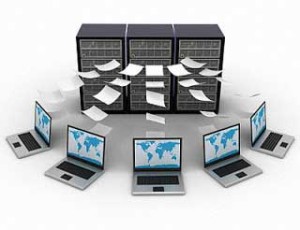
A career-long challenge for any CIO is how to communicate the value of IT! We have tried so many paths to this end…user newsletters, strategic initiative planning with “the business”, webinars, meetings with “the business” and countless other calisthenics, and most CIOs still walk through this struggle every day.
Here are a few newer ideas that, if applied appropriately, could make this conundrum come to a successful end:
Change the Terminology – IT staff should stop referring to internal clients as “the business”, if IT wants to be recognized for adding value to the success of the enterprise then it needs to BE part of “the business”!
Create IT Ambassadors – Traditionally, the CIO is the main communicator across the enterprise. OR, perhaps the responsibility rests with Business Analysts who focus on bridging the gap between IT and the internal clients.
With the advent of Agile processes across most companies today, the role of the Business Analyst is changing and more technical staff should be front and center with the clients. Each member of the IT Team should be capable of interacting with internal clients – spread this responsibility! BE part of “the business”!
Invest in Your IT Team – It is no longer enough for the IT Team to read a Business Requirement Document or review a system schematic or software program to gain enough knowledge about the business process across the enterprise to create real value.
Change your onboarding process to include an internship-like program rotating new staff members across the organization to observe and learn the complete process of the business. Hold lunch and learn sessions and invite business leaders to come to speak about their areas of responsibility.
After all, most companies today are spending untold hours and loads of money to learn the behavior of their external customers…why would you do less with your own staff? They need to understand the behaviors of their internal customers. Allow them to BE part of “The business!”
Change Your Hiring Guidelines – Gone are the days of hiring IT staff simply for their technical prowess – how has this worked for you thus far? Begin changing your interview process to be able to discover innovative thinking, analytical talent, relationship building skills, and humility.
- Look for people who have demonstrated an ability to solve problems and who enjoy doing this.
- Do they participate in online technical forums where they can share and receive information to solve a problem?
- Give them a business problem and allow them to whiteboard how they would apply technology to solve it.
- Can they easily and succinctly explain the business purpose and business outcome of a technology project in which they have participated?
- Do they have excellent eye contact?
- Do they answer the question asked?
- Do they convey calm?
- If they were not a Technologist, would another area in the company hire them? BE part of “The business!”
For more information reach out to Ellen Shepard: Ellen.Shepard@trcollaborative.com or connect with her on LinkedIn! https://www.linkedin.com/company/the-resource-collaborative-inc-








